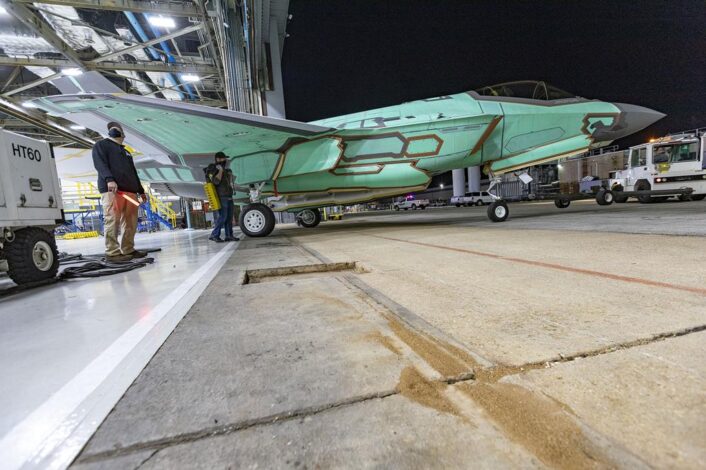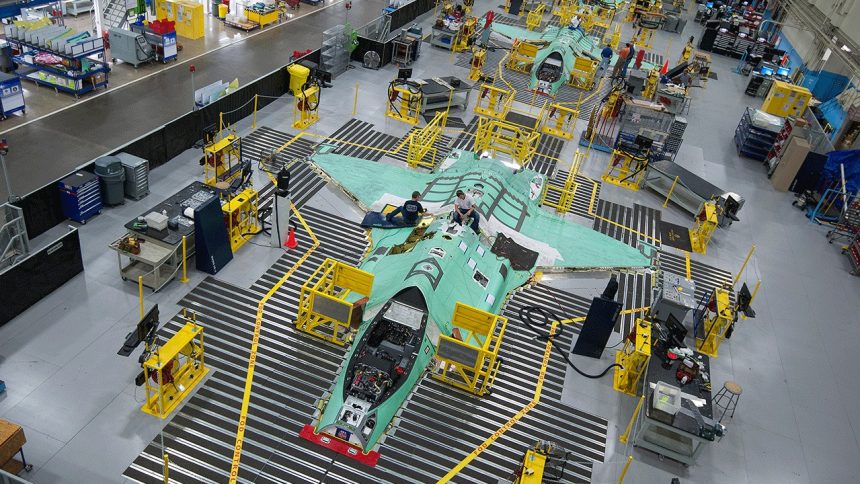The 1000th F-35 Lighting II jet will be delivered once it receives the necessary TR-3 hardware and final TR-3 software.
Lockheed Martin confirmed it has built the 1000th F-35, an important milestone for the multinational program which is about to hit another milestone soon: the full rate production decision in early 2024. The company said in a statement emailed to us that the aircraft has not yet been delivered and further details about the airframe, customer and photos will be released upon delivery.
The reason for the aircraft not yet being delivered is to be found in the troubled Technology Refresh 3 upgrade (TR-3), which provides the “computational horsepower” to support modernized Block 4 capabilities, although it has hit some delays. The delivery of the first TR-3 configured aircraft was expected in April 2023, however this is now expected to happen between April and June 2024.
“We continue to produce F-35s at rate and have jets in various stages of the final production process,” told us Lockheed Martin. “Once these jets receive the necessary TR-3 hardware and final TR-3 software is available, they will continue through the production process, including parking, until they are delivered.”
The statement mention parking as the Pentagon has temporally halted the deliveries until the TR-3 aircraft flight testing is complete, so the jets are being parked at Fort Worth until then. The company is keeping its 156 aircraft production goal and some estimates based on the production rates see more than 100 aircraft ready to be completed and delivered as soon as the deliveries resume.
We asked Lockheed Martin also for a statement regarding the production of TR-3 aircraft at the Cameri FACO (Final Assembly and Check-Out) in Italy, however they could not provide further details on that. The first Italian Lot 15 F-35, AL-23, flew from Cameri in December and, according to some reports, the aircraft has been built in TR-2 configuration and will be later retrofitted to the TR-3 configuration.
The 461st Flight Test Squadron conducted the first test flight of an F-35 in the TR-3 configuration at Edwards Air Force Base in January 2024, with the upgrade installed on AF-7, the first production-model F-35 delivered to the Air Force. As we already mentioned, Tech Refresh 3 is considered essential in order to deliver the Block 4 upgrade and the future ones, being described as the IT backbone for all future improvements.

Here is how the Air Force described the Technology Refresh 3 (you can find more in this article here at The Aviationist):
TR-3 provides the computational horsepower to support modernized Block 4 capabilities for the F-35 including: new sensor suites, more long-range precision weapons, improved electronic warfare features, more powerful data fusion, and increased cross-platform interoperability. These capabilities provide the warfighter a combat-edge to identify, track, engage, and survive against advanced air, ground, and cyber threats. TR-3 significantly updates core processing power and memory capacity, which will allow the F-35 to run advanced software packed with state-of-the-art warfighting capabilities.
The comprehensive flight test campaign of the TR-3 configuration is expected to be completed soon, with the Government Accountability Office saying that in Spring 2023 the test fleet had four F-35s devoted to TR-3 testing and three able to test Block 4 capabilities, with the latter being increased to 14 aircraft.
“Over the past few months, we began testing the next software release that will improve stability, radar, NextGenDAS and weapons capability,” told us Lockheed Martin about TR-3. “We also began test flights using TR-3 software on F-35 production jets in Fort Worth, and flight test continues at Edwards Air Force Base and Naval Air Station Patuxent River. As of late December, we have completed more than 180 flights. We also remain focused on expediting hardware delivery from our subcontractors that will be integrated with TR-3.”
TR-3 will be installed in all new production aircraft and retrofitted on all the F-35s already in service back to Lot 10. The retrofit, which requires 14 days of downtime, will be performed during scheduled maintenance. This way the F-35 will migrate to the open-system architecture and exploit all its advantages, like adding new or improved capabilities on operational aircraft very quickly and at a reduced cost.
It is possible that in the next few months we will see new milestones in rapid succession, specifically the completion of the TR-3 testing, with the consequent resume of the deliveries, and the full rate production decision.









